Below are some of the more common elbow problems that people might need to see a specialist for. If your symptoms seem to fit any of these problems then click on the diagnosis link to find out more. Please note that this is not an exhaustive list and is only a very broad guide to your potential problem.
I was lifting a heavy weight and I felt a sudden painful pop in my arm. I developed bruising and swelling around my elbow which is now weak and looks out of shape.
Distal biceps rupture
I have developed a deep pain in my elbow and cannot fully straighten and bend my elbow. This seemed to happen over a period months or even years.
Elbow arthritis
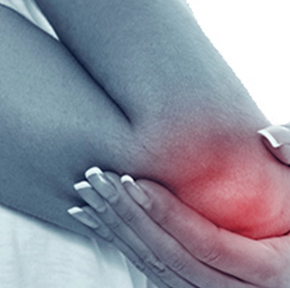
I fell heavily onto my elbow and I now can’t move it due to the pain and swelling.
Elbow trauma
I have developed a swelling over the back of my elbow which is painful if I knock it. Sometimes it gets bigger and has even been infected requiring antibiotics.
Olecranon bursitis
I have developed pain and tenderness on the outer/inner side of my elbow. The pain is aggravated by activities that involve gripping and movements of the wrist.
Tennis/golfer’s elbow
I have developed pins and needles in my ring and little fingers. At first this was intermittent but now the feeling is more constant and wakes me at night.
Ulna nerve compression
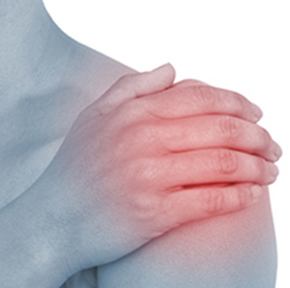

Below are some of the more common shoulder problems that people might need to see a specialist for. If your symptoms seem to fit any of these problems then click on the diagnosis link to find out more. Please note that this is not an exhaustive list and is only a very broad guide to your potential problem.
I fell heavily onto the side of my shoulder and now I have bump. Also, my shoulder doesn’t feel right and it fatigues easily with overhead activity.
Acromioclavicular joint injury
My shoulder has become painful and tender right at the bony area on top but I don’t recall an injury. It is worse as I reach up high or across my body.
Acromioclavicular joint arthritis
I dislocated my shoulder and now it feels like it may slip out of joint again when my arm is in certain positions.
Shoulder dislocation/instability
I injured my shoulder playing sport and now it is painful when I use it. It sometimes it clicks and I really can’t return to my pre-injury level of activity.
SLAP tear
Shoulder dislocation/instability
My shoulder and upper arm has become painful most of the time but it is worse when I raise my arm or reach behind. Overall my movements and strength are not too bad.
Subacromial impingement/bursitis
My shoulder has become painful most of the time and I struggle to raise my arm due to weakness. I may have had a fall that made it worse.
Rotator cuff tear
I have developed a deep ache in the shoulder and all my movements are stiff and painful. This seemed to happen over a period of weeks but I can’t think what started it.
Frozen shoulder
My shoulder has becoming extremely painful for no apparent reason over a really short period of time. This is making life miserable and I really can’t sleep.
Calcific tendonitis
Frozen shoulder
I have developed a deep pain in the shoulder and all my movements are stiff and painful. This seemed to happen over a period months or even years.
Shoulder arthritis
Frozen shoulder
I fell heavily onto my shoulder/outstretched hand and I now can’t move my shoulder due to the pain.
Shoulder fractures
What are they used for? Steroid (cortisone) injections act to reduce inflammation in the affected area. They are used to help relieve pain for a number of shoulder and elbow conditions. In the shoulder they are typically used for impingement (subacromial bursitis), acromioclavicular joint arthritis, rotator cuff disease and adhesive capsulitis (frozen shoulder). In the elbow injections may be used for tennis/golfers elbow and arthritis.
How effective are steroid injections? Most studies show that steroid injections around the shoulder and elbow can be beneficial. However it is difficult to predict how much benefit will be gained and for the length of time the effect will be maintained. Some patients get excellent long-lasting pain relief whilst others may only get partial relief that lasts only weeks.
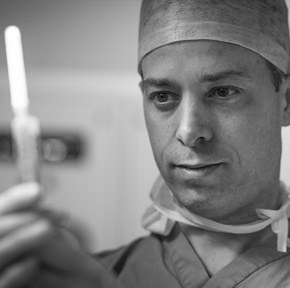
What to expect afterwards Usually you will feel an improvement in your pain shortly after the injection due to the effect of the local anaesthetic which is mixed with the steroid. As the local anaesthetic wears off you will feel some discomfort and occasionally the pain is worse than before the injection. This is called a ‘steroid flare’ and may last a few days. Simple over-the-counter painkillers such as paracetamol or ibuprofen may be required. It is safe to drive after the injection provided you feel okay. You may return to work and use the limb as pain allows but avoid strenuous use (such as gym work) for a few days.
What are the risks? Most people have no problems after steroid joint injections and it is very rare to get any major complications. Infections have been described which would manifest as persistent swelling, redness and pain with a high temperature. Patients with diabetes may experience a temporary rise in blood sugar which should therefore be closely monitored for 24 hours following an injection. Repeated injections may lead to thinning or a change in the colour of the skin around the injection site and damage to underlying tendons. It is generally accepted therefore that no more than three injections per year should be given.
When will I be seen after the injection? Typically you will be seen about 4-6 weeks following the injection to assess how effective it has been at relieving your symptoms. If the benefits are wearing off then further treatment options can be discussed.
You will be advised by the hospital the approximate time of arrival on the day of surgery. You must not eat or drink for 6 hours before surgery. However, you may be allowed to have clear drinks (water or black tea) up to 2 hours before the proposed surgery. This can be discussed further when the anesthetist sees you. You should take your usual medications (unless directed otherwise) on the morning of surgery with small sip of water. Rings should be removed from the arm that is to be operated on. This is for infection control purposes and to avoid tightness in the event of swelling that may occur following surgery.
What to bring with you
Arrival on the ward You will be taken to your room and asked to change into a hospital gown. Before the operation I will see you to talk through the operation again, ask any remaining questions you may have and obtain your consent for the operation. The side of the operation (left or right arm) will be checked with you and marked with a pen. The anaesthetist will see you and discuss the anaesthetic plan of care for your procedure.
The anaesthetic If you are having shoulder surgery, this will usually be performed under general anaesthesia with the addition of a (interscalene) nerve block. The nerve block is a small ultrasound guided injection in the lower neck, given after you are asleep, that numbs the shoulder and the arm. This provides very good pain relief during and after the operation. This means that less anaesthetic drugs are required during surgery allowing for a faster recovery and less sickness and drowsiness. The nerve block will continue to provide pain relief that will last for several hours after surgery (usually 6-12 hours, occasionally up to 24 hours). This means that until the block wears off you will have very little or no sensation in your arm and no strength. It is important therefore that you keep your arm in the sling and pay special attention to not accidentally damage your arm while you can't feel it. Interscalene blocks are not always completely effective because sometimes the local anaesthetic does not spread to all the nerves. If the block does not work sufficiently you will be given other painkillers. Details of the nerve block will be discussed with the anaesthetist on the day of surgeryy.
You will wake up in the recovery room where a nurse will check on you until you are fully awake. Once you are awake and comfortable you will be taken back to the ward. You may eat and drink when you feel able. A little later I will be around to check on you and explain the operation findings and procedure.
Going home or overnight stay? The majority of shoulder and elbow operations can be performed as day case. However it may be necessary to stay in overnight particularly if surgery is performed later in the day. You may go home once you are comfortable, have had something to eat and drink and the medical and nursing staff are happy with your condition. If you do go home the same day then it is important that you have someone to stay with you overnight.
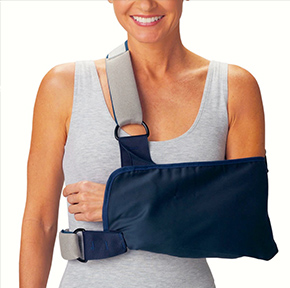
Sling If you have had a shoulder operation you will usually have a sling to wear. You will be advised as to how long to use the sling depending on the operation you have had. It is important to take your arm out of the sling several times a day so that your elbow does not stiffen. If an operation has been performed to repair tissue within the shoulder joint then the sling will need to be worn during the day and at night.
Wounds/dressings If you have had shoulder arthroscopy, you will have a large absorbent dressing over the shoulder which is removed the day after surgery. The dressings underneath do not need to be changed at all unless they become wet. To minimise the risk of infection, the incisions and dressings should be kept dry for 2 weeks. There will be no sutures, only small sticking paper strips over the wounds. These can be peeled off when the dressings are removed at your follow-up.
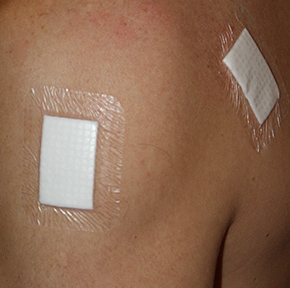
Follow-up A follow up appointment will be made for approximately two weeks after your operation to review your wound and provide further advice about your recovery. An explanation of the operation can then be repeated and any questions answered. You will normally be seen in clinic again at six weeks after surgery.
Physiotherapy It is essential to have physiotherapy after shoulder surgery, to encourage good movement, help with pain management and rehabilitate the muscles back to normal function. A physiotherapist will see you prior to discharge to advise you of home exercises and arrange further therapy sessions.
Driving You may begin driving when you are free from the sling and feel able to handle a steering wheel comfortably with both arms. If you are unsure then please discuss this at the time of follow up.
Return to work The required time off work will depend both on the nature of your work and the type of operation you have undergone. For most individuals with an office-based job, you may return to work even in a sling by approximately two weeks. Employment requiring heavy lifting should be avoided for at least six weeks, but may need to be avoided for several months or more depending on the operation required. This will be discussed in clinic at the time that surgery is being discussed.
Sleeping can be uncomfortable for a while and you should lie on your back or on the opposite side. If you are lying on your back, place a pillow behind the operated arm for support. Sleeping should become easier as your shoulder settles over the subsequent few weeks.
Dressing It is easiest to wear loose fitting and front opening clothes. Put the operated arm in your clothes first. Try and avoid shoe-wear with laces and opt for slip-on or Velcro fastenings.
Washing It is important to keep the wounds dry. The dressings used are typically splash proof but not waterproof. If you have a bath it keep the wound above the water and remember that you will not be able to use your operated arm to help you get out. It may be easier therefore to shower but try to keep the operated shoulder out of the spray as much as possible. To wash and dry the under arm area, bend at the waist and let the arm gently hang.